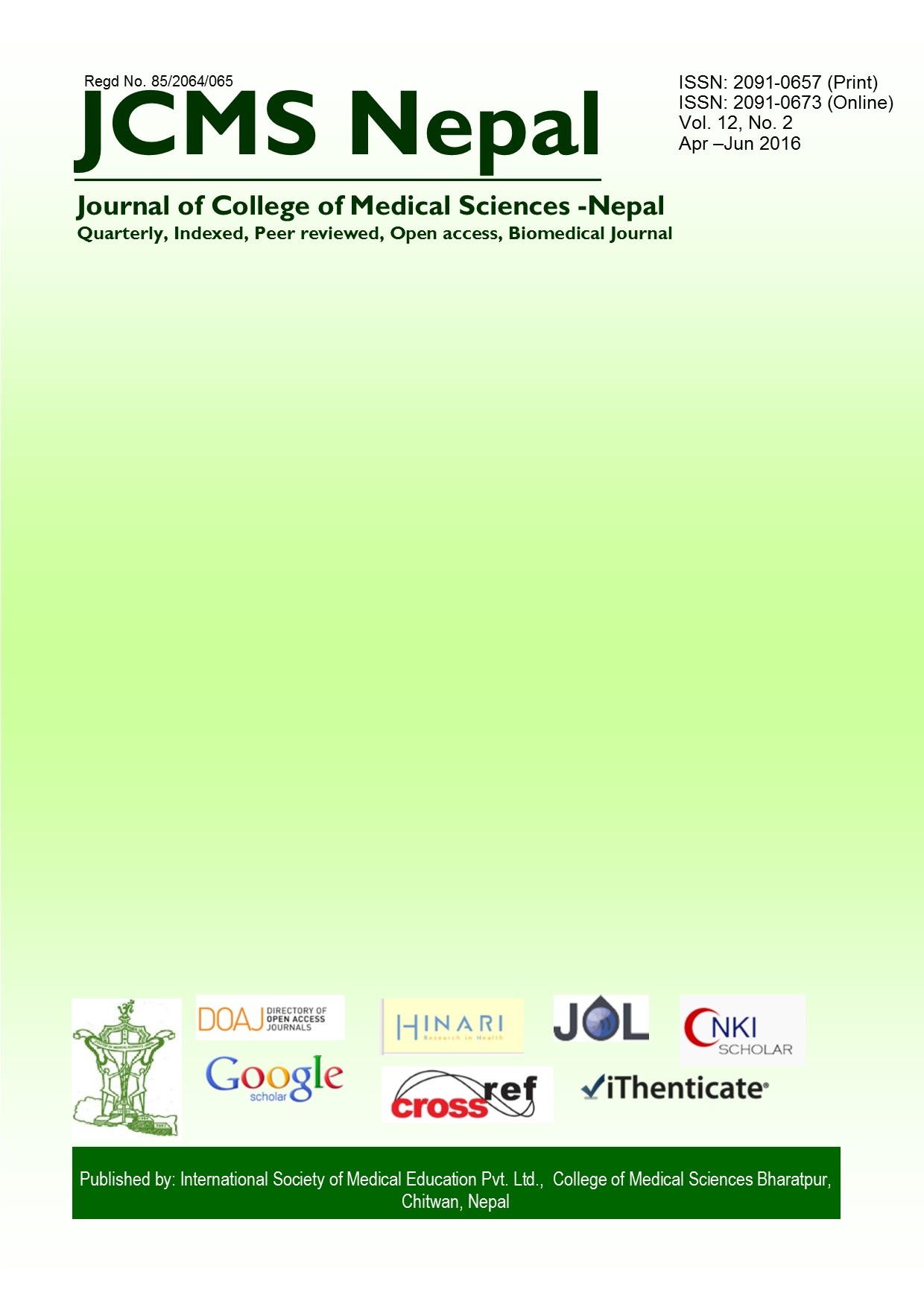Transmylohyoid Submental Intubation in complex maxillofacial trauma: The easiest method is also the safest method
DOI:
https://doi.org/10.3126/jcmsn.v12i2.15455Keywords:
Airway management, Panfacial fracture, Sub-mental intubationAbstract
Background & Objectives: Complex maxillofacial trauma is a common occurrence with high velocity road traffic accidents. Multiple facial bone fracture with loss of reference point for bony reduction requires use of intra-operative intermaxillary fixation to obtain good occlusion which precludes oral intubation. Fractures of nasal bones and ethmoid bones with complex distorted anatomy lead to inability to perform a nasal intubation. In such cases sub-mental intubation can be a safe and easy method of securing the intra-operative airway thus avoiding tracheotomy and its complications.
Materials & Methods: Retrospective clinical analytical study was planned in which 25 patients were included. Patient’s age, sex, type of trauma, time taken for procedure and complications were taken as study variables.
Results: Average time taken for the procedure was nine minutes and only four out of 25 cases had complications.
Conclusion: Sub-mental intubation requires simple skills, less time and is relatively complication free compared to tracheotomy in securing intra-operative airway during surgeries for complex maxillofacial trauma.
JCMS Nepal. 2016;12(2):55-9
Downloads
Downloads
Published
How to Cite
Issue
Section
License
This license enables reusers to copy and distribute the material in any medium or format in unadapted form only, for noncommercial purposes only, and only so long as attribution is given to the creator.




